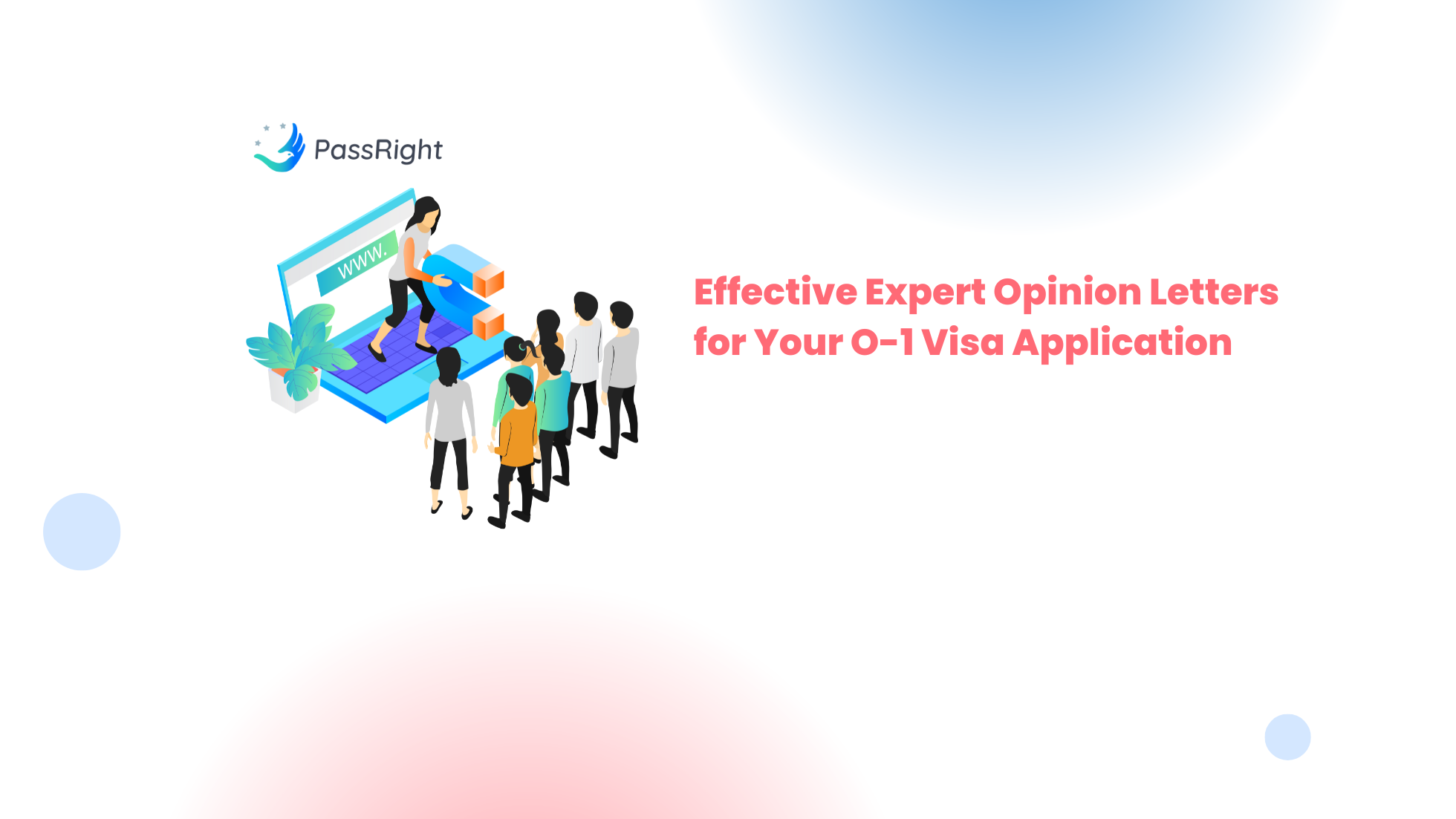The EB-1 Visa for tech workers has been a hot topic lately, especially with the recent wave of layoffs impacting many people from India and China in 2023. This visa allows tech workers to apply to become permanent U.S. citizens by self-petitioning without an employer’s sponsorship, but processing times can be lengthy. To understand the options available, it’s essential to first look at the latest USCIS Visa Bulletin and understand the questions many potential applicants have concerning their eligibility.
EB-1 Visa
The EB-1 Visa is a category of employment-based visa that offers a path to permanent residency in the United States. It is a highly sought-after visa, particularly among tech workers seeking permanent residence in the country. With the EB-1 Visa, tech workers with specific qualifications can obtain a Green Card without needing an employer’s sponsorship. This is especially beneficial for laid-off workers who cannot secure sponsorship from an employer. Although the processing time for EB-1 visas can vary, the USCIS is trying to speed up the process, making it a more feasible option for tech workers seeking permanent residency in the U.S.
There are three subcategories of EB-1 visas:
- EB-1A – for individuals with extraordinary abilities
- EB-1B – for outstanding professors and researchers
- EB-1C – for multinational managers and executives
Advantages of Applying for EB-1A Green Card Through Self-petition
There are advantages to pursuing an EB-1A Green Card through self-petition, including not requiring a job offer in the United States and an exemption from the labor certification process, which can take several months. However, it’s important to note that even with a self-petition, applicants will still need to prove that their work will bring substantial prospective benefit to the United States. This can be done by providing evidence of past achievements, publications, media recognition, and awards. Despite this requirement, the EB-1A category typically has a faster processing time than other employment-based green cards.
People Eligible for EB-1 Visa
To be eligible for the EB-1 Visa, you must obtain three of the requirements that were established by the U.S. Immigration Services (USCIS):
- To qualify, an applicant must demonstrate sustained national or international acclaim in their expertise in the sciences, arts, business, education, or athletics. The USCIS has established ten criteria; the applicant must meet at least three.
- The applicant must also aim to continue working in their field of expertise in the United States.
- The applicants must demonstrate that their entry will substantially benefit the country in the future.
Now that we know the requirements for obtaining the EB-1 Visa, we’ll look at the step-by-step application process.
Will EB-1 Visa Become Current in 2023?
In the Visa Bulletin for March 2023, the U.S. Department announced that starting from March 2023, the EB-1 category for India and China will retrogress to June 1, 2022. Other countries will remain current. As a result, only individuals with approved EB-1 I-140 petitions filed before June 2022 will be eligible for a Green Card.
EB-1A Visa Application Process; Step-by-Step
Although the processing time for EB-1 Visas can vary, the USCIS is trying to speed up the process. With proper documentation and qualifications, tech workers can obtain a Green Card through this program.
Whether you have an employer sponsoring you or you are petitioning for yourself, the subsequent stage of the procedure entails submitting the I-140 form.
Form I-140 for Immigrants
To begin the process, the applicant must file a Form I-140 petition with U.S. Citizenship and Immigration Services (USCIS). The processing time for an I-140 petition can vary based on several factors, including the workload of the USCIS office processing the application and the case’s complexity. On average, the processing of I-140 can take several months to a year or more.
However, Form I-140 is eligible for premium processing, which expedites the process and ensures that the case is adjudicated within 15 calendar days. The applicant has to file Form I-907 to request premium processing, and the 15-day period will begin when the USCIS receives and acknowledges it.
After USCIS receives the I-140 form, it will first review the form to ensure that it is complete and that the required initial evidence has been submitted. USCIS will then begin processing the I-140 petition. The processing time for an I-140 petition can vary depending on a number of factors, including the USCIS workload, the complexity of the case, and whether additional evidence or information is required. Generally, USCIS will issue a receipt notice within a few weeks of receiving the I-140 petition, which will confirm that the petition has been received and is being processed.
If USCIS needs additional information or documentation to complete the review of the I-140 petition, they will issue a Request for Evidence (RFE). The petitioner will have a specific period of time (usually 90 days) to respond to the RFE with the requested information.
Once USCIS has completed the review of the I-140 petition, they will make a decision on whether to approve or deny it. If the petition is approved, the beneficiary may be eligible to proceed with the next step of the immigration process, such as applying for an adjustment of status or a visa at a U.S. consulate abroad. If the petition is denied, the petitioner may have the option to appeal the decision or file a motion to reopen or reconsider the case.
I-485 Form for Permanent residence or adjust status
The I-485 is an application to register permanent residence or adjust status filed after the I-140 petition by tech workers and layoffs already in the United States. . The applicant must have been in the U.S. under a qualifying nonimmigrant status and wait until their priority date becomes current before submitting the I-485 petition to USCIS. The I-485 application process for the EB-1 category can take 6 to 12 months. Still, this time frame is only valid if the category is current. It is essential to check the category status at the DOS Visa Bulletin, as a backlog can cause additional delays.
Is the EB-1 Processing time longer for India and China?
Countries like India and China have been subject to country-specific quotas by the U.S. Department of State’s Visa Bulletin, which can contribute to longer processing times for EB-1 green cards. The Visa Bulletin is used by the United States Citizenship and Immigration Services (USCIS) to determine when visas will be available for applicants from India and China. If the Visa Bulletin is backlogged due to the high number of applications, it can take longer for the Green Card application to be processed.
Another factor that can contribute to a longer processing time for EB-1 Green Cards from India and China is the high number of applications that USCIS receives. Due to the high demand for Green Cards from these two countries, USCIS may have a backlog of applications that can increase the processing time of a Green Card application. Additionally, USCIS may require additional documentation or evidence to verify that an applicant meets the eligibility requirements of the EB-1 Green Card. This additional documentation can also increase the processing time of a green card application.
The EB-1 Visa Processing Time 2023
Generally, the USCIS processing of an EB-1 petition can take several months to over a year. The timeline can also be affected by issues such as the complexity of the case, the volume of applications being processed, and any requests for additional evidence.
However, PassRight requires eight weeks to prepare for the EB-1A I-140 stage. Once USCIS receives the I-140 petition, they will assign a priority date. If the priority date becomes current according to the visa bulletin, then we can file for an Adjustment of Status.
Conclusion
In simple words, getting an employment-based immigrant visa (EB-1A) involves several stages. The first stage, which involves preparing the EB-1A I-140 application, takes PassRight 8 weeks. After that, there is a premium processing time, which takes 15 days to be adjudicated.
However, if someone is applying under the EB-3 or EB-2 PERM categories, there is an additional stage where the Department of Labor needs to process their application, which takes around one year. This means that before the applicant can even begin the I-140 stage, they must wait for this first stage to be completed. Once the Department of Labor approves their application, the I-140 stage begins, and the Adjustment of Status can follow.
The reason why Indians often have to wait for a long time is that their priority dates are backlogged, which means more people are applying for visas than there are visas available. This delays the processing time, and applicants have to wait until their priority date becomes current before they can move forward in the process.
To sum up, the EB-1 Visa program presents an opportunity for tech workers to obtain permanent residency in the United States if they meet the USCIS qualifications. The EB-1A Visa presents a great opportunity for qualifying tech workers to apply for a Green Card without the need for employer sponsorship. This is a valuable option, especially for those who have been affected by layoffs in their current employment situation. Moreover, the USCIS is trying to expedite processing times in 2023, making the EB-1 Visa program a more feasible option for tech workers seeking permanent residency in the U.S.
If you want to talk about EB-1 Visa, please contact us.
FAQ:
Can tech workers apply for the EB-1 Visa without an employer’s sponsorship?
Yes, tech workers can apply for the EB-1 Visa without an employer’s sponsorship through the self-petitioning EB-1A Visa. This is especially beneficial for workers who have lost their job due to layoffs or cannot be sponsored by an employer.What is the estimated processing time for an I-140 petition in 2023?
It’s difficult to provide a definitive answer as processing times for I-140 petitions can vary depending on various factors, such as the caseload at the USCIS office handling the petition and the case’s complexity. However, according to the USCIS website, the estimated processing time for the I-140 petition is between 7.5 and 12.5 months as of February 2023. It’s important to note that these are only estimates, and processing times may change depending on various factors. Additionally, premium processing is available for an additional fee, which can expedite the processing and decrease waiting time to 15 calendar days.Is EB-1 the same as a Green Card?
EB-1 is a category of employment-based visas. Obtaining an EB-1 Visa is one way a foreign national may be eligible to apply for a Green Card (permanent residence) in the United States. The EB-1 Visa is dedicated specifically to individuals who demonstrate extraordinary ability in their field.









